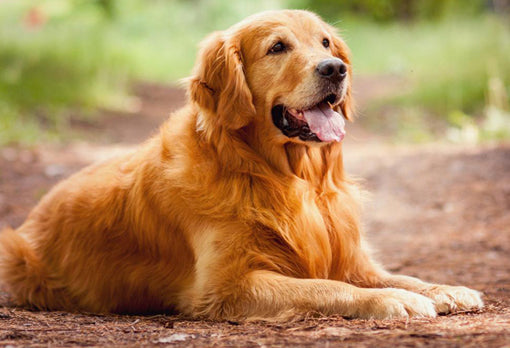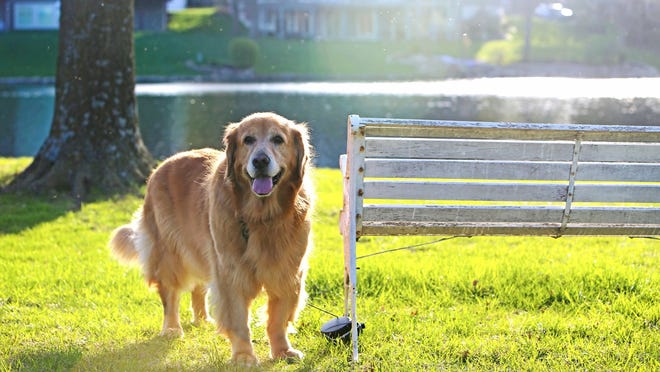Golden Retriever Traits Every Owner Must Know

Table of Contents
Owning a Golden Retriever is both a privilege and a responsibility. Known worldwide for their warmth, intelligence, and unwavering loyalty, these dogs are among the most beloved companions in households across the globe. Yet beneath their iconic golden coat lies a complex set of characteristics that every potential owner should understand before welcoming one into their lives.
Temperament and Personality Retriever
These dogs are renowned for their affable nature. Gentle with children, tolerant of other pets, and eager to please, they embody a temperament that makes them ideal family companions. Their sociable disposition means they thrive in environments where interaction is abundant. Left alone for extended periods, however, they may develop anxious tendencies, leading to destructive behavior or excessive barking. Their emotional sensitivity is as much a strength as it is a consideration for their caregivers.
Intelligence and Trainability Retriever
Highly ranked among the most intelligent breeds, these dogs possess an extraordinary capacity for learning. Obedience training often feels less like a chore and more like a collaborative exercise. Their innate desire to work alongside humans allows them to excel in advanced tasks ranging from agility sports to service roles. Clear, consistent guidance paired with positive reinforcement creates the optimal framework for unlocking their full potential.
Retriever Exercise Requirements
A sedentary lifestyle does not suit this breed. Daily activity, ideally in the form of long walks, swimming, or energetic play, is essential for maintaining both physical health and mental equilibrium. Without sufficient outlets for their boundless energy, they may channel restlessness into undesirable habits. Regular exercise not only supports muscular development but also fortifies their naturally joyful demeanor.
Grooming and Coat Care
The hallmark golden coat demands consistent upkeep. Weekly brushing helps manage shedding, prevents tangles, and distributes natural oils for a healthy sheen. During seasonal shedding cycles, more frequent grooming becomes necessary to keep the home manageable and the dog comfortable. Bathing should be occasional, as excessive washing may strip essential oils, leaving the coat dull and skin irritated.
Health Considerations
Like many large breeds, they face a predisposition toward certain hereditary conditions. Hip and elbow dysplasia, heart ailments, and various forms of cancer occur with some frequency. Responsible ownership involves routine veterinary visits, genetic screening when possible, and careful monitoring for early warning signs. Balanced nutrition, weight management, and preventive care significantly increase longevity and overall quality of life.
Social Needs and Bonding
These dogs flourish when they are treated as integral members of the family unit. Their strong attachment to humans is not limited to mere companionship; it is a genuine emotional bond. They respond enthusiastically to affection and seek reassurance in times of uncertainty. Providing mental stimulation, whether through interactive toys or problem-solving games, helps deepen this bond while preventing boredom.
Adaptability to Living Environments
While they can adapt to urban or suburban settings, space is a key consideration. Access to a yard or nearby parks makes daily exercise more feasible. Apartment living is possible, but only if the owner is diligent about meeting activity demands. Their tolerance of new environments and strangers generally makes relocation or travel less stressful, provided their need for interaction is consistently met.
Role as Working Dogs
Historically bred as hunting companions, their skill set extends well beyond retrieving game. Today, they serve as guide dogs, therapy animals, and search-and-rescue partners. Their trainability, combined with patience and a calm demeanor, allows them to succeed in diverse working roles. This legacy underscores their versatility and explains their widespread presence in service-related capacities.
Emotional Sensitivity
One of their lesser-discussed traits is their acute sensitivity to human emotions. They often mirror the mood of their household, offering comfort when sadness lingers and amplifying joy in moments of celebration. This intuitive responsiveness makes them particularly cherished by families and individuals seeking emotional companionship. Yet it also underscores the importance of providing a stable and nurturing environment.
Welcoming this breed into one’s life is more than an aesthetic choice; it is a commitment to understanding and meeting the multifaceted needs of a highly intelligent, deeply affectionate animal. Their temperament, energy, grooming demands, and health considerations require attention, but the rewards are immeasurable. With proper care, these dogs enrich homes with loyalty, warmth, and companionship that endures for years.


